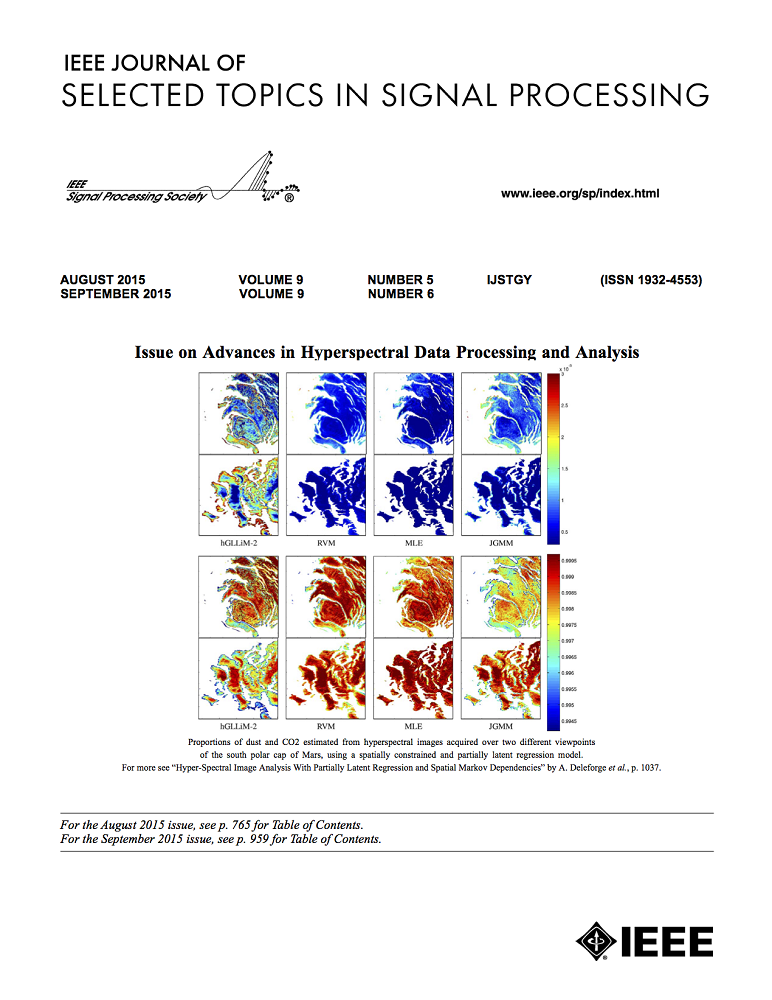Low-Latency Deep Analog Speech Transmission Using Joint Source Channel Coding
IF 8.7
1区 工程技术
Q1 ENGINEERING, ELECTRICAL & ELECTRONIC
IEEE Journal of Selected Topics in Signal Processing
Pub Date : 2025-01-06
DOI:10.1109/JSTSP.2024.3521277
引用次数: 0
Abstract
Low-latency configurable speech transmission presents significant challenges in modern communication systems. Traditional methods rely on separate source and channel coding, which often degrades performance under low-latency constraints. Moreover, non-configurable systems require separate training for each condition, limiting their adaptability in resource-constrained scenarios. This paper proposes a configurable low-latency deep Joint Source-Channel Coding (JSCC) system for speech transmission. The system can be configured for varying signal-to-noise ratios (SNR), wireless channel conditions, or bandwidths. A joint source-channel encoder based on deep neural networks (DNN) is used to compress and transmit analog-coded information, while a configurable decoder reconstructs speech from noisy compressed signals. The system latency is adaptable based on the input speech length, achieving a minimum latency of 2 ms, with a lightweight architecture of 25 k parameters, significantly fewer than state-of-the-art systems. The simulation results demonstrate that the proposed system outperforms conventional separate source-channel coding systems in terms of speech quality and intelligibility, particularly in low-latency and noisy channel conditions. It also shows robustness in fixed configured scenarios, though higher latency conditions and better channel environments favor traditional coding systems.低延迟可配置语音传输给现代通信系统带来了巨大挑战。传统方法依赖于单独的信源和信道编码,这往往会降低低延迟限制下的性能。此外,不可配置系统需要对每种条件进行单独训练,限制了其在资源受限情况下的适应性。本文提出了一种用于语音传输的可配置低延迟深度联合信源信道编码(JSCC)系统。该系统可根据不同的信噪比 (SNR)、无线信道条件或带宽进行配置。基于深度神经网络(DNN)的联合源信道编码器用于压缩和传输模拟编码信息,而可配置的解码器则从有噪声的压缩信号中重建语音。系统延迟可根据输入语音的长度进行调整,实现了 2 毫秒的最低延迟,其轻量级架构包含 25 k 个参数,大大少于最先进的系统。仿真结果表明,在语音质量和可懂度方面,特别是在低延迟和高噪声信道条件下,拟议系统优于传统的独立源信道编码系统。它还显示了在固定配置情况下的鲁棒性,尽管更高的延迟条件和更好的信道环境有利于传统编码系统。
本文章由计算机程序翻译,如有差异,请以英文原文为准。
求助全文
约1分钟内获得全文
求助全文
来源期刊

IEEE Journal of Selected Topics in Signal Processing
工程技术-工程:电子与电气
CiteScore
19.00
自引率
1.30%
发文量
135
审稿时长
3 months
期刊介绍:
The IEEE Journal of Selected Topics in Signal Processing (JSTSP) focuses on the Field of Interest of the IEEE Signal Processing Society, which encompasses the theory and application of various signal processing techniques. These techniques include filtering, coding, transmitting, estimating, detecting, analyzing, recognizing, synthesizing, recording, and reproducing signals using digital or analog devices. The term "signal" covers a wide range of data types, including audio, video, speech, image, communication, geophysical, sonar, radar, medical, musical, and others.
The journal format allows for in-depth exploration of signal processing topics, enabling the Society to cover both established and emerging areas. This includes interdisciplinary fields such as biomedical engineering and language processing, as well as areas not traditionally associated with engineering.
 求助内容:
求助内容: 应助结果提醒方式:
应助结果提醒方式:


